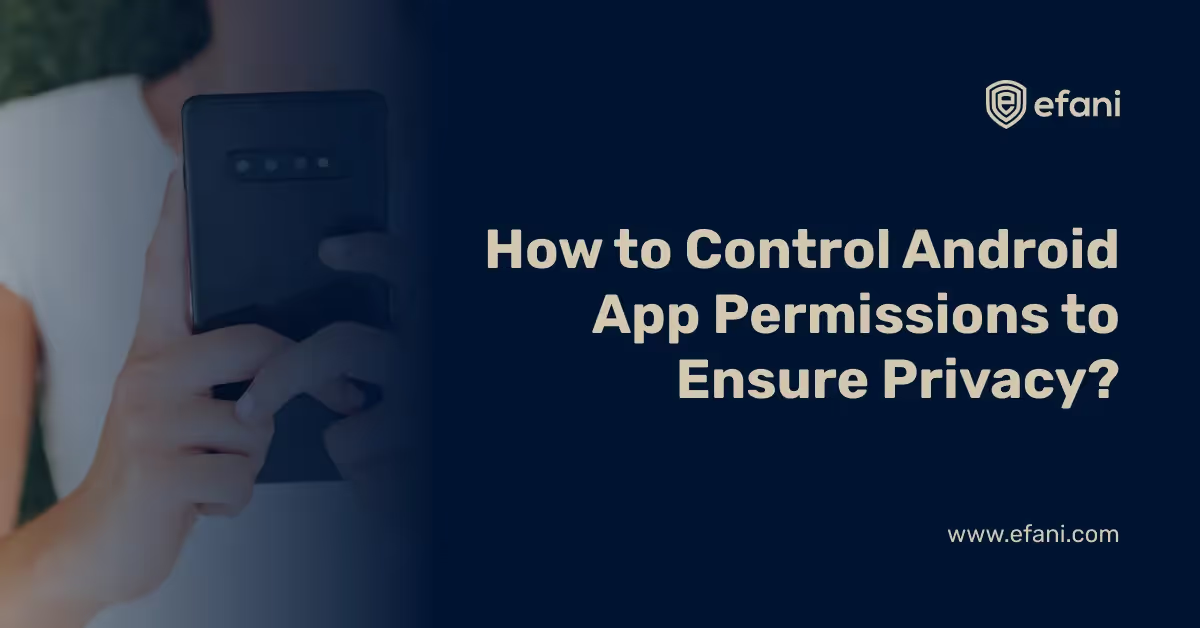How to Control Android App Permissions to Ensure Privacy?


Introduction
Have you ever struggled with Android app permissions? It's understandable to be wary, as they can provide third-party apps direct access to personal data. However, certain apps need permission to work effectively. On the other hand, Android's app access mechanism has evolved with time. Earlier, app permissions were generally defined, and most applications would access all or most data on the phone. And you had to agree on all of the requests or uninstall the app.
The latest Android versions have addressed the issue by transitioning to a more precise authorization system that allows users to prevent an app from exploiting all device functionality.
Furthermore, you should not grant an application all access before downloading it. When apps require authorization, they will now request it. A recently installed file management app, for instance, will only seek permission to view your files the very first time you run it and not instantly after you download it.
Unless the apps are produced by credible developers or organizations, looking through the authorization necessary for some apps might be frightening. These rights are often required for the app to work correctly. However, an app may seek more rights than are necessary for it to function.
If you need these apps for daily use, you'll be relieved to learn that you can select which data apps on your phone can access, even though the app was created for an earlier Android platform and has all access allowed by default.
Read this article and discover which app permissions to refuse, which to grant, and manage your private data on Android.
Want Guaranteed Protection Against SIM Swap? Reach Out to Us.
How to Manage App Permissions on Android?
App permissions on Android can grant these applications access to your phone's call log, private texts, camera, photos, recordings and microphones, etc. App permissions requests appear when an app wants access to personal data on your mobile or tablet for the first time and are frequently connected to privacy.
You'll probably notice an app authorization request if you download an app from Google Play. Installing a photo app, for instance, will require your authorization to use your phone camera so that it can take pictures.
App permissions include tracking your geolocation, saving files, sending or receiving texts and calls, accessing confidential log data, and viewing your calendar, contacts, calendar, and browser history.
The good news is that now you can manage the access using the Android permissions controller.
Here are a few helpful tips to control Android app permissions to maintain your privacy (and sanity):
Check Permission for Each App on Your Phone Individually:
The Android permissions controller is a component of the operating system that controls which privileges apps have. After downloading it, it allows you to approve or deny access to a new app. Ensure you're using Android 6.0 (Marshmallow) or later to activate or deny permissions for a particular app.
- To see all of the applications on your phone, open your Settings and tap on "Apps" or "Applications."
- To learn more about any of them, simply tap it.
- Locate the "Permissions" button and press it to see all of your phone's features that the application has permission to.
- The icons next to each access can then be toggled as needed.
- For apps intended for previous Android versions, you'll get a notice warning you that refusing the permissions may affect the app to perform incorrectly. Earlier apps presume they already have the necessary rights and will not ask you to allow it if you turn it off. If you have difficulty with an app, you can still return to this page and re-enable the access.
- You could also press the menu icon to view the "All permissions" button, showing how the app uses the authorizations it requests in detail.
Also, Read 7 Must-Have Cybersecurity Apps for Android
Check Permission for Each Feature of the App Individually:
You can also update each app's permission based on its feature. By heading to "Settings" then "Apps" or "Applications," you may see all the apps with access to a given authorization at once. In the upper corner, select the menu icon and choose "App permissions." It will show you a list of privileges that the desired app has. You may tap any access to see a list of all the applications using that feature. Slide the toggle button to On or Off to allow or revoke an app's authorization. You can tap it on and off again later if you have changed your mind or need to use a feature.
Check Permission for New Apps Before Installing It:
Examine an app's privileges before installing it to maintain stringent privacy requirements. To see what permissions an Android app has in the Google Play store, open it and search for the app you want to download.
Now, scroll down to" About this app" and open it. Then scroll to the bottom of the page and select "App permissions." Here you will see all of the permissions that the app will require.
You can then determine if you trust the app creator and are okay using it. Opting to use just apps with the proper rights from the beginning is an excellent method to keep control over Android app access.
Conclusion:
There's no logic to getting furious when an app requires many permissions. In many cases, the need for those privileges is legitimate. But keep in mind that you have complete control over what kind of data and system assets each specific app can view at any given moment.
Read 7 Practical Android Privacy Tips You Didn't Know Before
Is your cellphone vulnerable to SIM Swap? Get a FREE scan now!
Please ensure your number is in the correct format.
Valid for US numbers only!
SIM Swap Protection
Get our SAFE plan for guaranteed SIM swap protection.







